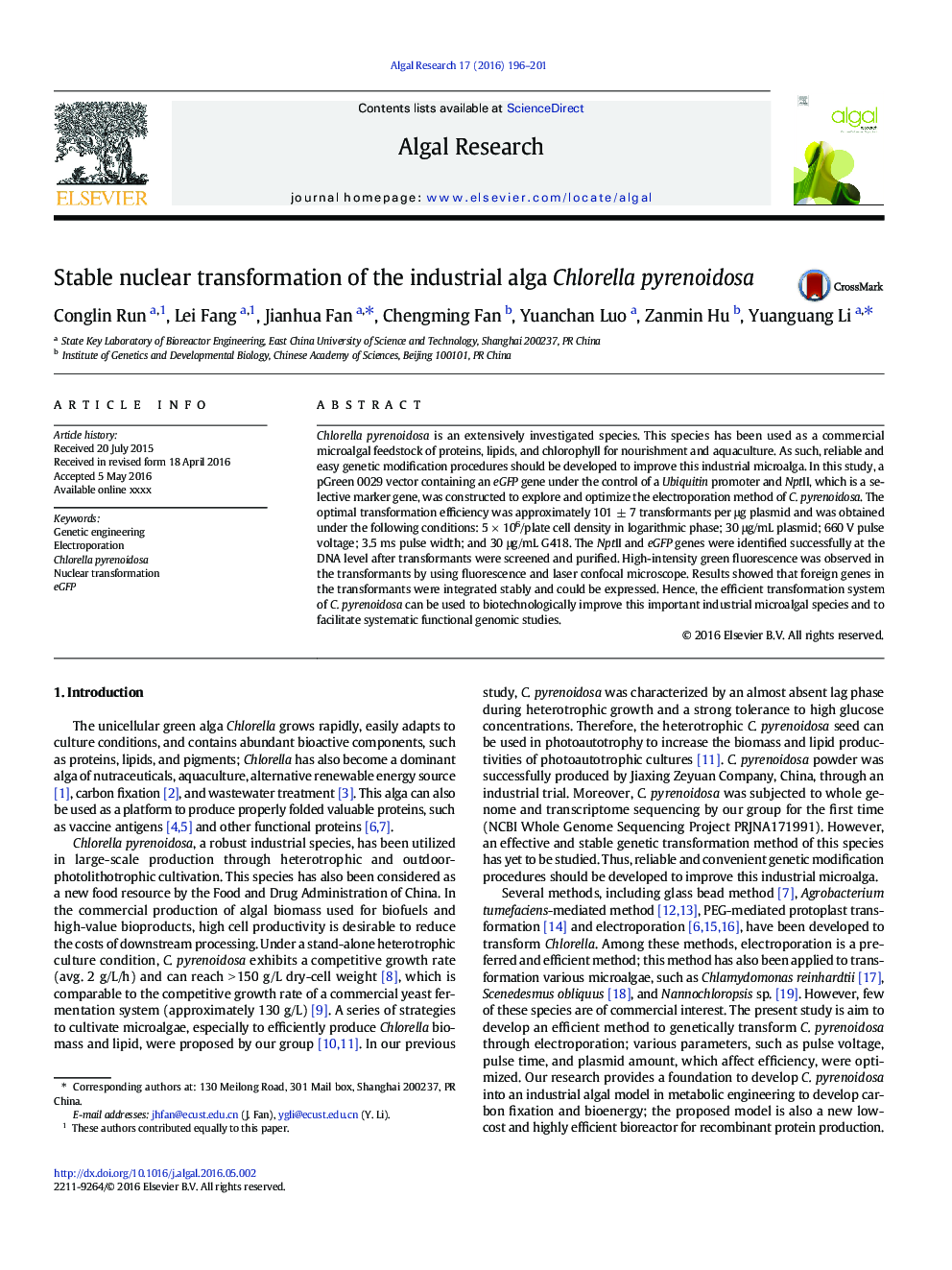| Article ID | Journal | Published Year | Pages | File Type |
|---|---|---|---|---|
| 8086816 | Algal Research | 2016 | 6 Pages |
Abstract
Chlorella pyrenoidosa is an extensively investigated species. This species has been used as a commercial microalgal feedstock of proteins, lipids, and chlorophyll for nourishment and aquaculture. As such, reliable and easy genetic modification procedures should be developed to improve this industrial microalga. In this study, a pGreen 0029 vector containing an eGFP gene under the control of a Ubiquitin promoter and NptII, which is a selective marker gene, was constructed to explore and optimize the electroporation method of C. pyrenoidosa. The optimal transformation efficiency was approximately 101 ± 7 transformants per μg plasmid and was obtained under the following conditions: 5 Ã 106/plate cell density in logarithmic phase; 30 μg/mL plasmid; 660 V pulse voltage; 3.5 ms pulse width; and 30 μg/mL G418. The NptII and eGFP genes were identified successfully at the DNA level after transformants were screened and purified. High-intensity green fluorescence was observed in the transformants by using fluorescence and laser confocal microscope. Results showed that foreign genes in the transformants were integrated stably and could be expressed. Hence, the efficient transformation system of C. pyrenoidosa can be used to biotechnologically improve this important industrial microalgal species and to facilitate systematic functional genomic studies.
Related Topics
Physical Sciences and Engineering
Energy
Renewable Energy, Sustainability and the Environment
Authors
Conglin Run, Lei Fang, Jianhua Fan, Chengming Fan, Yuanchan Luo, Zanmin Hu, Yuanguang Li,
